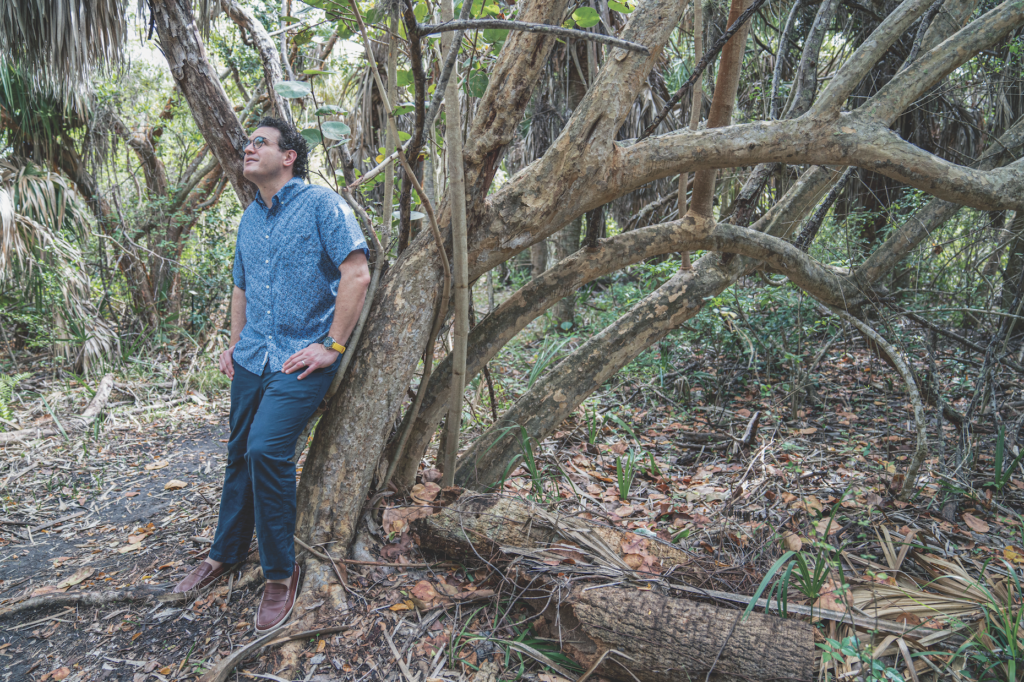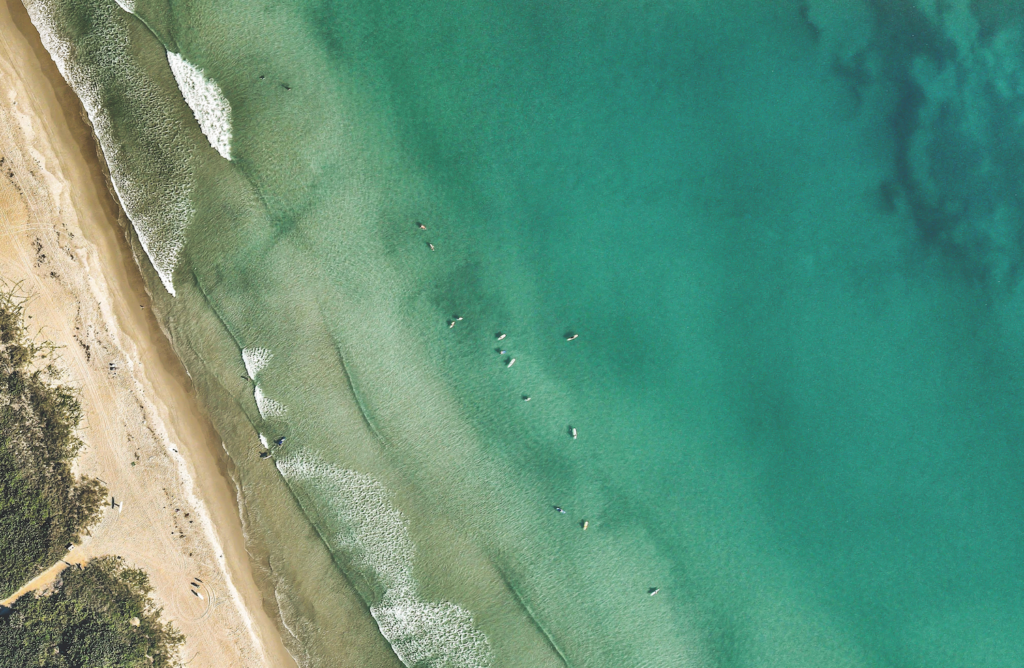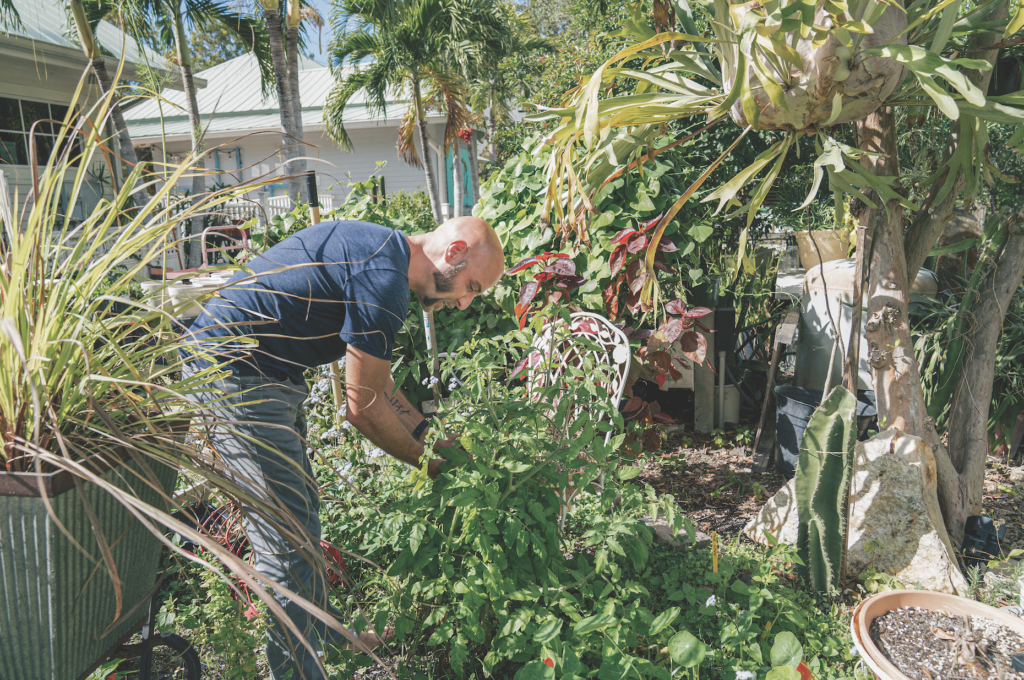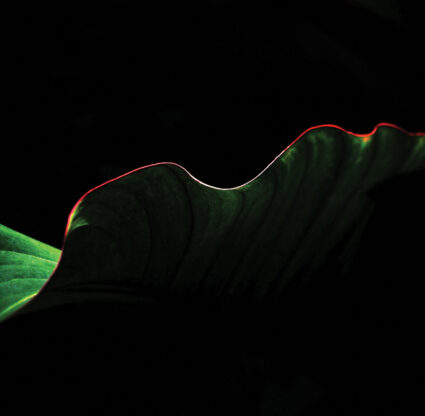Jennifer Jones
Director, Center for Environmental and Sustainability Education, Florida Gulf Coast University, Fort Myers
Jennifer Jones, Ph.D., would argue that the impact of sustainable living reaches far beyond the changes we see outdoors. “Environmental is, of course, a key element in what most of us are familiar with, but there’s also the social and economic aspect of sustainability,” she explains.
As the director of the Center for Environmental and Sustainability Education at Florida Gulf Coast University (FGCU), Jones is tasked with connecting students to faculty mentors. She also teaches the importance of sustainable living, with a mind toward balancing the needs of urban growth with environmental consciousness. She wants students to focus on how we can sustain growth efficiently. Shaping a generation of leaders who are conscious and equipped to handle issues like climate change and red-tide outbreaks requires educating them outside of ecological studies, she says. That’s partially why every student at FGCU—regardless of their major—is required to take the University Colloquium course, which touches on everything from Fort Myers history to Sanibel’s waterways. Efforts such as these, along with the on-site food forest, 400 protected acres and LEED-certified buildings have earned the college recognition as one of the most sustainable campuses in the country. And Jones is determined to extend that impact into the community.
She recognizes that children are the future of our region. Since joining FGCU’s staff in 2019, Jones has helped develop a year-long program, where Lee County K-12 teachers join the university’s professors in the field to develop environmental curricula for their students. Through Boys and Girls Club of Collier County and Grace Place for Children and Families, Jones also introduced an eight-week program, which includes classes on watershed issues, sea-level rise and other topics for after-school educators, with field-based training for the kids, including boat trips to Keewaydin Island. “It’s helping students understand what they need to do, not just giving them information,” Jones says.
Her goal: to cultivate Southwest Florida as a place where environmental and social responsibility are part of the fabric of the community.
—Tess Raines
Rick Molek
Owner, Thrifty Garden, Fort Myers
On a cool afternoon in early spring, Rick Molek stands in the middle of his test garden, barefoot. He’s dressed in a short-sleeved blue shirt and a pair of soft cotton trousers, the kind that could easily be hitched up if he needed to bend down to inspect a particularly interesting plant or a Monarch butterfly drifting between sweet almond bushes.
Molek owns Thrifty Garden, a shop for all things plant-related in the historic Gardner’s Park district near downtown Fort Myers. Since he opened the space in 2018, Molek has garnered a loyal following of plant enthusiasts. His specialties are wide ranging. He’s a certified Master Gardener, and he offers in-home garden consults, in-shop houseplant clinics and classes on everything from butterfly gardening to composting to Florida-native landscapes.
It’s this last topic that gets his horticulturalist’s heart beating. In the garden behind his shop, Molek grows a mix of natives and Florida-friendly plants—wild lime, salvia, giant milkweed, firebush. Many natives, like the blue mistflower, aren’t commercially viable. They’re short-lived and reseed rapidly. But they’re a beautiful addition to the landscape, and Molek is quick to convince clients of this, educating them on the fact that many natives, given the opportunity, will thrive. He’s a fan of wild gardening and encourages his clients to leave some space in their yards without deliberate landscaping. Not the whole area, necessarily, but a patch of it. A 5- by 5-foot plot works nicely. “Let it surprise you,” he urges.
In his own garden, Molek has found that if he dithers too long on what to do with a particular stretch, the garden will figure it out for itself—usually in the form of native wildflowers. These natives are key, he says, not just for the landscape but for the entire ecosystem: the birds, bugs and butterflies that rely on indigenous species. “Florida is wild,” Molek says. “Anything we can do to approximate that wildness is better for this state.” —Artis Henderson

Ryan Orgera
CEO, Sanibel-Captiva Conservation Foundation, Sanibel Island
From his scientific field of vision, Ryan Orgera, Ph.D., CEO of Sanibel-Captiva Conservation Foundation (SCCF), sees the islands’ waters at the mercy of broken systems that require mitigation and adaptation to fix.
From the perspective of a student of romance languages and literature, however, he reviews the situation in a positive vein: “SCCF as an organization and Sanibel and Captiva are really smart, easy reads; incredibly sophisticated, airy works that leave the readers with a sense of comfort and accomplishment.”
From his work on the Ending Illegal Fishing Project and Global Shark Conservation teams with The Pew Charitable Trusts, to teaching French and Italian at the university level and serving in the U.S. Senate as an ocean, coastal and flood insurance policy expert—Orgera arrived at SCCF in 2019 toting a heavily loaded toolbox.
Like its CEO, the 53-year-old SCCF diversifies its interests. Its list of initiatives is staggering: land acquisition, water-quality research, sea turtle and shorebird nest monitoring, illegal land turtle trading, oyster bed restoration, native plant gardening, policy making. “The work our staff does is invaluable to our decision-makers and the public alike,” Orgera says. “Our scientists provide crucial data used by water managers from Tallahassee to Captiva; our policy experts work hard to ensure smart policies are enacted; our educators teach thousands each year about their connections to nature.”
Before Orgera, people who have long followed SCCF would say that the organization’s long-standing education mission had taken a backseat to urgent water quality research issues (the latter of which was recently further fueled by a new, state-of-the-art laboratory on Tarpon Bay, a partnership with J.N. “Ding” Darling National Wildlife Refuge). Orgera soon got to work forming another partnership, this one with the existing Sanibel Sea School, to strengthen SCCF’s education mission. Also under his watch, the organization’s original campus has been restored from hurricane damage to once again provide trails and a connection with nature. “I am proudest of our staff’s ability to be a voice for our natural world and to always fight for it using science and heart,” he says. —Chelle Koster Walton

Derek and Elizabeth Coquillard
Owners, SWFL Produce, Punta Gorda
From 10 acres in Punta Gorda, husband-wife duo Elizabeth and Derek Coquillard, owners of SWFL Produce (a co-op that sells and distributes food grown in area farms, including their own, to shoppers across the region) make it easy for people to eat local. They also show how farms can nurture their communities beyond merely feeding them: The couple support other small farms by working as a co-op, saving farmers some of the business costs. Their Florganica Farms uses innovative hydroponic methods to lower its carbon footprint. They require high standards from partner farms. Through their delivery system, they’ve helped customers avoid coronavirus exposure, and employed locals who lost their jobs during the pandemic to help with deliveries. Elizabeth also teaches parents how to feed their kids healthily, with Facebook posts aimed at stemming child obesity.
But have no doubt, they do feed their community—and they do so well and affordably, from Venice to Marco Island. Unlike most other local community-supported agriculture (CSA) groups that are attached to just one grower, SWFL Produce partners with eight small, sustainable farms to complement its own supply of 10 varieties of heirloom tomatoes (their specialty), lychees, mangoes, avocados, sugar apples and chickens. Because the ground crops grow vertically, the operation requires less land than a conventional produce farm. Water circulates through the irrigation-fertilization system, cutting down on their use of soil and water. Sealed greenhouses keep out bugs, meaning no pesticides.
Derek, a third-generation farmer, and Elizabeth partner with other farmers to deliver a wide variety of produce, eggs, honey, coffee, meat and more to their customers who order online. Since the pandemic, the Coquillards also started trucking in produce that can’t grow in Florida from California.
Unlike most CSAs, SWFL Produce supports foster care and discounted food stamp programs. A subscription is not required, but it’s available to regulars. All customers can pick up their a la carte orders at the facility, at one of six drop-off spots throughout the region, or pay a $5 flat fee for home delivery (waived for orders over $50). “We just wanted to start delivering conveniently so people can eat healthy, without any excuses, no matter what their financial situation,” Elizabeth says. —C.K.W.

John Brady
Landscape Photographer, Naples
Spend enough time in the Everglades, and you’ll start collecting stories about wildlife encounters. Landscape photographer John Brady has plenty.
The 62-year-old, who’s spent 20-plus years photographing Florida, recalls a time in 2001 when he, his wife and kids had just moved from upstate New York to Naples. Brady was hiking a trail in Fakahatchee Strand State Preserve when he spotted a 12-foot alligator in the middle of the path. Not seeing a way around the gator, Brady turned to head back—only to come across a nearly 350-pound black bear on all fours. “He just took off, and it sounded like a locomotive going through the swamp,” Brady recalls. “So, he’s running through the swamp, and I’m running down the trail back to my truck.”
What makes treks like these into the depths of the Everglades worth it for him is the potential of capturing a great image of undisturbed flora, like Cypress trees—“one of the most beautiful trees and one of the oldest living organisms on the planet,” he says—and spending time in these remote places. He shoulders a 60-pound backpack filled with gear, including an Ebony view camera and sheets of film.
His fascination also led him to discover the Everglades Wonder Gardens in Bonita Springs. In 2013, when he learned the site was for sale, he worried the land would be developed into condominiums, so he approached the owner, with an offer. “He wanted $4.5 million, and I was in no position to purchase the property,” Brady says.
Brady asked to lease the three acres until he found a buyer. During the next two years, Brady and his family worked to transform the Wonder Gardens into a botanical jungle with birds and reptiles. With Ellie Krier, of the Southwest Florida Land Preservation Trust, Brady also helped form the nonprofit that manages that park’s operations today. “We owe a debt of gratitude to John for his hard work and passion to save the Wonder Gardens and preserve its legacy,” David Webb, executive director of the park, says. “John was instrumental in establishing the path toward preservation.” —Alyssa Morlacci





